
Index:
GAO’s RFID BLE IoT & Drone for the Audio and Video Equipment Manufacturing
GAO helps customers comply with standards, mandates & regulation of the Audio and Video Equipment Manufacturing
GAO’s software provides API
Case studies of RFID applications
GAO has served the Audio and Video Equipment Manufacturing extensively
Overview
Audio and video manufacturing involves designing and producing devices for recording, editing, transmitting, and reproducing sound and visual media. This process combines automated assembly and manual labor with quality control being a critical aspect. RFID and BLE are wireless technologies that can enhance the efficiency and functionality of the manufacturing process. GAO RFID Inc. is a top leader in RFID and has extensive experience in the audio and video equipment manufacturing industry.
GAO’s RFID BLE IoT & Drone for the Audio and Video Equipment Manufacturing
Applications & Benefits of applying RFID to the audio and video equipment manufacturing
- Improve inventory management: GAO’s RFID technology can be used for asset tracking, inventory management, and supply chain optimization. Our RFID tags can be attached to audio and video equipment components, allowing manufacturers to track their movement throughout the manufacturing process also can be used to authenticate and secure equipment, ensuring that only authorized users have access
- Enhanced quality control: Manufacturers can gain enhanced visibility and control over their production processes. Our RFID tags can be used to track products at every stage of the manufacturing process, providing real-time data on product location and status. This enables manufacturers to identify any quality issues early on and take corrective actions to ensure that only high-quality products are shipped to customers
- Increased productivity: It can help to streamline the manufacturing process by automating inventory management and reducing the need for manual data entry. Our RFID can help to reduce labor costs, increase efficiency, and improve overall productivity.
- Improved supply chain management: Useful to track products throughout the supply chain, from the manufacturing facility to the distribution center to the retail store. GAO’s RFID can help to improve supply chain visibility, reduce lead times, and increase efficiency.
Applications & Benefits of applying BLE technology to the audio and video equipment manufacturing
- Universal compatibility: By using GAO’s BLE technology manufacturers can create remote control systems that are compatible with a wide range of mobile devices and operating systems. This ensures that users can control their equipment regardless of the type of devices they have
- Individualized recommendations: By analyzing user behavior and preferences, GAO’s BLE enable devices can generate personalized recommendations for audio and video content. This could include suggestive new artist or movies based on the user’s past listening or viewing history
- Location-based services: Can be used to provide location-based services such as indoor navigation, proximity-based advertising, and asset tracking. GAO’s BLE can be particularly useful in public places like shopping malls, airports, and concert venues.
- Improved audio quality: Our BLE can support high-quality audio streaming, enabling users to enjoy clear and uninterrupted sound. With our BLE, audio devices can also be designed to support advanced audio features like noise-cancellation, EQ adjustments, and immersive soundscapes.
Applications & Benefits of applying combination of RFID and drones to the audio and video equipment manufacturing
- Asset tracking: Drones equipped with GAO’s RFID technology offer numerous benefits for manufacturing processes. Manufacturers can improve asset tracking, productivity, quality control, and supply chain management.
- Productivity: Combining our RFID and drones can help to streamline the manufacturing process, reducing the need for manual data entry and increasing efficiency
- Quality control: Drones can be used to inspect audio and video equipment for defects or damage, while our RFID technology ensures that the correct items are being inspected. This improves quality control processes and reduces the risk of defective products reaching customers.
- Supply chain management: GAO’s RFID technology can be used to track audio and video equipment throughout the supply chain, from manufacturing to distribution. By using drones to monitor the movement of products, manufacturers can ensure that they are being transported safely and securely.
Benefits of applying combination of RFID and IoT to the audio and video equipment manufacturing
- Real-time data analytics: By using our RFID tags to track audio and video equipment, manufacturers can collect real-time data on equipment performance, usage patterns, and maintenance needs. This data can then be analyzed using IoT technology to identify trends, optimize processes, and make informed business decisions.
- Predictive maintenance: IoT data and analytics can be leveraged to predict when audio and video equipment will require maintenance or repairs, enabling manufacturers to take proactive steps to reduce downtime and extend the lifespan of equipment. This can result in significant cost savings over time.
- Inventory tracking and management: When GAO’s RFID is integrated with IoT devices, manufacturers can automate inventory tracking and management processes. This can help to minimize inventory losses, prevent stockouts, and ensure that products are available when and where they are needed.
- Increased operational efficiency: By tracking equipment with our RFID tags and IoT technology, manufacturers can streamline operations and reduce waste. This can lead to greater efficiency, cost savings, and increased profitability.
GAO helps customers comply with standards, mandates & regulation of the Audio and Video Equipment Manufacturing
GAO RFID Inc. has helped many companies in the audio and video equipment manufacturing to deploy RFID systems and to ensure such deployments complying with the applicable industry standards, mandates and government regulations:
- Consumer product safety commission (CPSC): The CPSC is responsible for enforcing safety regulations related to consumer products, including audio and video equipment. Manufacturers must comply with CPSC regulations related to product safety, labeling and recalls
- Federal communications commission (FCC): The FCC regulates the use of electronic devices, including audio and video equipment, to ensure that they do not interfere with other wireless devices. Manufacturers must obtain FCC certification for their products before they can be sold in the U.S
- Environmental protection agency (EPA): The EPA regulates the use of hazardous substances in electronic products, including audio and video equipment. Manufacturers must comply with EPA regulations related to the use and disposal of hazardous materials
- Occupational safety and health administration (OSHA): OSHA regulates workplace safety, including in manufacturing facilities that produce audio and video equipment
- National institute of standards and technology (NIST): NIST develops and publishes standards related to technology and manufacturing. Manufacturers may choose to comply with NIST standards related to product design, testing and quality management.
- Canadian Radio-television and Telecommunications Commission (CRTC): The CRTC regulates the use of radio, television, and telecommunications in Canada, including audio and video equipment.
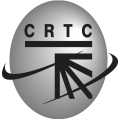 CRTC (Canada Radio and Television Commission)
CRTC (Canada Radio and Television Commission)
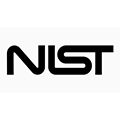 NIST (National Institute of Standards and Technology)
NIST (National Institute of Standards and Technology)
 FCC (Federal Communications Commission)
FCC (Federal Communications Commission)
 CPSC (Consumer Product Safety Commission)
CPSC (Consumer Product Safety Commission)
 Environmental Protection Agency (EPA)
Environmental Protection Agency (EPA)
 Occupational Safety and Health Administration (OSHA)
Occupational Safety and Health Administration (OSHA)
GAO’s software provides API
GAO’s popular RFID software such as personnel tracking, asset tracking, access control, parking system control (work-in-progress) offers a free trial and offer an API to each of the common software in the audio and video equipment manufacturing:
Personnel management:
- Manufacturing Execution Systems (MES): Software that manages the production process, including scheduling, quality control, and inventory management.
- Computer-Aided Design (CAD): It helps design engineers create detailed 2D and 3D models of products, including audio and video equipment.
- Computer-Aided Manufacturing (CAM): This software can help manufacturing engineers create toolpaths and instructions to produce audio and video equipment.
- Quality Management Systems (QMS): Is software that manages quality control processes, including inspections, testing, and certification.
- Enterprise Resource Planning (ERP): software that manages the entire manufacturing process, including production planning, inventory control, purchasing, and customer order management.
Equipment management:
- Equipment Maintenance Management Software (EMMS): It helps organizations manage equipment maintenance schedules, work orders, and inventory. This software can help audio and video equipment manufacturers keep their equipment running smoothly and minimize downtime due to equipment failures or breakdown.
- Equipment Monitoring Software: Provides real-time monitoring of audio and video equipment, allowing the organization to quickly detect and diagnose equipment problems. This software can help manufacturers identify and address equipment issues before they cause production delays or quality problems.
- Product Lifecycle Management (PLM): PLM software is used to manage the entire lifecycle of a product, from design and development to retirement. It allows manufacturers to collaborate across departments and track product development progress.
- Enterprise Resource Planning (ERP): Is used to manage all aspects of a business, including manufacturing, inventory, accounting, and customer relationships. It provides a centralized system for managing all business processes and data.
- Digital Asset Management (DAM): Software that helps organizations manage digital media assets, including audio and video files. This software can help audio and video equipment manufacturers organize and manage their digital media assets, making it easier to find and use them in the production process.
Supply chain management:
- Enterprise Resource Planning (ERP): ERP software is commonly used in supply chain management to manage all aspects of a business, including manufacturing, inventory, accounting, and customer relationships. It provides a centralized system for managing all business processes and data.
- Supplier Relationship Management (SRM): SRM software is used to manage supplier relationships and improve supplier performance. It allows manufacturers to track supplier performance metrics, manage contracts, and collaborate with suppliers.
- Warehouse Management System (WMS): WMS software is used to manage inventory in warehouses and distribution center. It allows manufacturers to track inventory levels, manage shipments, and optimize warehouse operations.
- Transportation Management System (TMS): TMS software is used to manage transportation and logistics operations. It allows manufacturers to optimize shipping routes, track shipments, and manage transportation costs.
- Electronic Data Interchange (EDI): It allows organizations to exchange business documents electronically with their suppliers and customers. This software can help audio and video equipment manufacturers streamline their supply chain operations and reduce errors and delays associated with manual document exchange.
Work-in-progress:
- Product Data Management (PDM): Software that helps organizations manage their product data, including CAD files, bills of materials, and engineering change orders. This software can help audio and video equipment manufacturers ensure that their product data is accurate and up to date, enabling them to design and manufacture products more efficiently and effectively.
- Material Requirement Planning (MRP): It helps organizations manage their material requirements, including forecasting demand, planning productions schedules, and managing inventory levels. This software can help audio and video equipment manufacturers ensure that they have the right materials and components on hand to meet production schedules and customer demands.
- Electronic Batch Records (EBR): Software that helps organizations manage their batch production processes including recipe management, material tracking, and batch execution. It can help audio and video equipment manufacturers ensure that their products are manufactured consistently and to the highest quality standards.
- Manufacturing Intelligence (MI): Is designed to help audio and video equipment manufacturers to collect, analyze, and report on their manufacturing data. This software provides real-time insights into production performance, quality metrics, and downtime analysis.
- Visual Factory Management (VFM): Is software designed to help audio and video equipment manufacturers visualize and manage their manufacturing processes in real-time. This software uses digital displays and real-time data to provide a clear and concise overview of the manufacturing process, which can help organizations improve communication and collaboration among their production teams.
Other applications:
- Product Design and Development: Product design and development software is used to create and refine new audio and video equipment. These software programs allow manufacturers to develop detailed 3D models, test functionality, and optimize design features.
- Quality Management: Quality management software is used to manage and improve product quality. These software programs allow manufacturers to track defects, manage corrective actions, and analyze quality data to identify areas for improvement.
- Customer Relationship Management (CRM): CRM software is used to manage customer relationships and improve customer satisfaction. It allows manufacturers to track customer interactions, manage customer information, and analyze customer data to identify trends and improve service levels.
- Sales and marketing: Sales and marketing software is used to manage sales and marketing activities. These software programs allow manufacturers to manage leads, track sales opportunities, and measure marketing campaign effectiveness.
- Cybersecurity: Cybersecurity software is used to protect against cyber threats such as hacking, malware, and data breaches. These software programs allow manufacturers to monitor their network, detect threats, and prevent unauthorized access to their systems and data.
Case studies of RFID applications
A case study of RFID application in the audio and video equipment manufacturing industry in the U.S:
In 2020, Rentex CTO Marcus De Luco sought to improve the efficiency of the company’s rental operations. The existing warehouse processes were effective but inefficient, relying on manual data collection through scanning conventional barcodes. De Luco discovered an integrated solution from a rental asset software provider and RFID tag manufacturer, Vizinex, that could automate the identification and location of rental assets, including equipment inside road cases and warehouse racks. After a successful internal test, Rentex partnered with Vizinex and the software provider to build a system that streamlined their rental processes and improved efficiency.
Another case study of RFID application in the retail construction industry in the U.S:
Harman International Industries has adopted RFID technology to enhance its inventory management and manufacturing processes. The company uses RFID tags to track the movement of products and components throughout its manufacturing facilities, improving inventory accuracy, reducing the risk of theft, and enabling just-in-time manufacturing. Harman also leverages RFID technology to enhance customer engagement, as demonstrated by its RFID-based interactive display at the Consumer Electronics Show. Overall, Harman’s use of RFID technology illustrates the potential for RFID to improve efficiency and customer experience in the audio and video equipment industry in the US.
GAO has served the Audio and Video Equipment Manufacturing extensively
GAO RFID Inc., one of the global top 10 RFID leaders, is based in the cities of New York and Toronto and it has deployed RFID, BLE and IoT projects for many leading companies in the audio and video equipment manufacturing including its various divisions such as:
- Audio equipment manufacturing: Involves the production of audio equipment such as speakers, headphones, and amplifiers.
- Video equipment manufacturing: The video equipment manufacturing industry is a subset of the broader electronics manufacturing industry. Involves the production of video equipment such as camcorders, digital cameras, and video editing software.
- Home entertainment equipment manufacturing: Produces a variety of consumer electronics products designed to enhance entertainment experiences within the home.
- Professional broadcasting equipment manufacturing: Produces a range of specialized equipment designed for use in the broadcast industry.
- Musical instrumental manufacturing: The musical instrument manufacturing industry produces a wide range of instruments for musicians and music enthusiasts.
- Television manufacturing: This sub-industry involves the production of various types of televisions, including LCD, LED, OLED, and plasma TVs.
List of the leading companies in the Audio and Video Equipment Manufacturing in the U.S.:
 Shure
Shure
 Bose Corporation
Bose Corporation
 Harman International Industry
Harman International Industry
 Sennheiser Electronic Corporation
Sennheiser Electronic Corporation
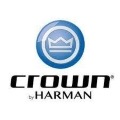 Crown Audio Incorporated
Crown Audio Incorporated
 Audio-Technica U.S., Incorporated.
Audio-Technica U.S., Incorporated.
 Mackie Designs Incorporated.
Mackie Designs Incorporated.
 Vizio
Vizio
 QSC Audio Products, LLC
QSC Audio Products, LLC
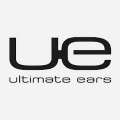 Ultimate Ears
Ultimate Ears
 Electro-Voice
Electro-Voice
 Fender Musical Instrument Corporations
Fender Musical Instrument Corporations
 TASCAM
TASCAM
 Gibson Brands, Incorporated.
Gibson Brands, Incorporated.
 Plantronics Incorporated.
Plantronics Incorporated.
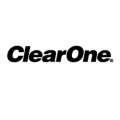 ClearOne Communications, Incorporated.
ClearOne Communications, Incorporated.
 JBL Professional
JBL Professional
 Klipsch Group, Incorporated.
Klipsch Group, Incorporated.
List of the leading companies in the Audio and Video Equipment Manufacturing in Canada:
 BZB Express
BZB Express
 Adamson Systems Engineering
Adamson Systems Engineering
 Radial Engineering
Radial Engineering
 Solotech
Solotech
 Axiom Audio
Axiom Audio
 PSB Speakers
PSB Speakers
